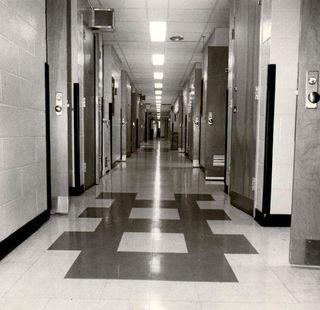Child Development
The Cancer Cowboys and Leukemia's First 'Moonshot'
The Bills, Sabres are big in Buffalo, but these doctors are city's true heroes.
Posted January 2, 2019

A half-century ago, a group of doctors in Buffalo, New York, took acute lymphoblastic leukemia, once a leading killer of children, from a death sentence to the 90 percent survival rate it has today. Along the way, these leukemia doctors, nicknamed the Cancer Cowboys, revolutionized chemotherapy care, invented the blood centrifuge machine, and went on to open cancer centers across the country.
These days we hear the call for a “cancer moonshot.” And thanks to immunotherapy and other advances, we appear to be on the cusp of a new era in medicine. Yet we need to remember that the first cancer moonshot took place thanks as much to teamwork and common purpose as to new technology and medical advances.
In the early 1960s, if one looked up leukemia in the Handbook of Pediatrics, the diagnosis simply read, “There is no cure.” That was unacceptable to the doctors who began to gather at Roswell Park Comprehensive Cancer Center in Buffalo.
“If you saw a child drowning in a river, you wouldn’t worry about how swift the current is or how deep the waters might be,” said Dr. Donald Pinkel, a fourth-generation Buffalonion, who went on to found St. Jude’s Research Hospital in Memphis, Tennessee.
Money flowed in from Albany, the state capital, for research and equipment. But what really put Buffalo on the map for quality care was a series of fortunate coincidences. For almost a decade, the top experts in the field worked in Western New York. It was a time when “giants walked the earth,” one medical scholar remembers.
When Dr. James Holland left the National Cancer Institute for a better-paying job at Roswell Park in 1954, his boss asked him to continue to lead a small group of cancer doctors. At the time, it meant moving only a few boxes of files. Yet Holland soon grew his team, the Acute Leukemia Group B, into one of the top cancer organizations in the world.
After hours, they regularly gathered in the Hollands’ kitchen in north Buffalo to discuss the latest clinical trails and advances in patient care. James Holland’s wife, Jimmie, was also a doctor and one evening she asked the Cancer Cowboys if they had given much thought to their patients’ emotional state. Out of those discussions came landmark studies in psycho-oncology, bringing the fields of psychology and oncology together.
Everyday people became caught up in the can-do attitude in Buffalo, too. When Cyril Garvey, whose son, Kevin, was undergoing treatment at Roswell Park, saw people sleeping in their cars, he thought they were homeless. When told that they were parents of other children at the cancer center, but couldn’t afford a hotel room, he began work on the Kevin Guest House. The nation’s first hospitality facility, it was the forerunner to the Ronald McDonald Houses that are now found nationwide.
My brother Eric was diagnosed with acute lymphoblastic leukemia in 1966. He was expected to die within 18 months. Thanks to the doctors and nurses at Roswell Park, he lived for eight years and we reveled in those times, learning to skate and play hockey during the winters and sailing across Lake Ontario to the Canadian side during our summers together as a family.
“The thing about a story is that you dream it as you tell it,” novelist Tim O’Brien once wrote, “hoping that others might then dream along with you.…”
In writing Cancer Crossings, I was able to peel back the years and conjure up those times when my brother was still with us. In talking with the Cancer Cowboys, I was reminded of the time when a band of doctors and nurses based in Buffalo dared to take on cancer. It took a long time for their peers to realize what they were up to, and in the interim they were called “killers,” “poison pushers” and “misfits.” As Pinkel says, Cancer Cowboys was about the only name they could really embrace.
In the last year, both of the Hollands, James and Jimmie, have died and others associated with this golden era aren’t getting any younger. Yet when you walk the grounds of the burgeoning medical campus in downtown Buffalo, hear the music in the atrium, feel the bustle of the place, you realize that their legacy lives on in Western New York, the site of cancer’s first moonshot.
Tim Wendel is the author of 13 books, including Cancer Crossings: A Brother, His Doctors and the Quest for a Cure to Childhood Leukemia.




